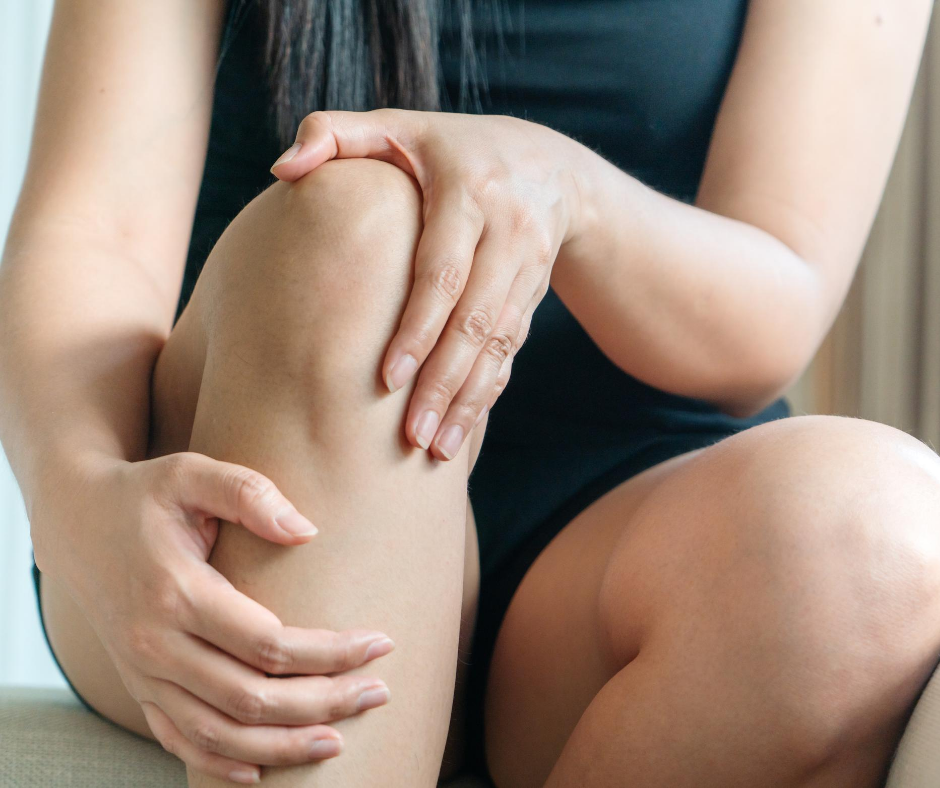Are Men Or Women More Likely To Injure Their Feet & Legs?
August 25, 2020

We have the privilege of treating foot and leg injuries day in and day out. It’s very easy to pick up on patterns – like the shoes you wear into the clinic giving us the first hint of what your pain or injury may be, or your walking style giving away some biomechanical problems that have likely contributed to your problem developing without you even realising.
Today, our podiatry team thought we’d use our experience – paired with the clinical evidence – to share the answer to an interesting question we get asked from time to time: who is more likely to injure their feet or legs, men or women?
 Examining the research and statistics, looking at hospitalisations for sports injuries across the ditch showed that men were twice as likely to be hospitalised for a sports injury compared to women, though with a positive declining trend, down from 3.5 times almost a decade ago. The participation rate is a big factor here, however, with participation in high-impact sports like rugby union being significantly higher in men compared to women – though the female participation rate is growing!
When it comes to work-related injuries, in 2018 the highest incidence of work-related injury claims were in the agriculture, forestry and fishing industries, which affected notably more men than women. This is in line with previous years, where 71% of all work-related injury claims were for men – twice as high as women – and men represented three-quarters of all serious injury claims to ACC. Again, this figure is expected to be significantly influenced by the proportionally higher participation of men vs women in these industries.
Examining the research and statistics, looking at hospitalisations for sports injuries across the ditch showed that men were twice as likely to be hospitalised for a sports injury compared to women, though with a positive declining trend, down from 3.5 times almost a decade ago. The participation rate is a big factor here, however, with participation in high-impact sports like rugby union being significantly higher in men compared to women – though the female participation rate is growing!
When it comes to work-related injuries, in 2018 the highest incidence of work-related injury claims were in the agriculture, forestry and fishing industries, which affected notably more men than women. This is in line with previous years, where 71% of all work-related injury claims were for men – twice as high as women – and men represented three-quarters of all serious injury claims to ACC. Again, this figure is expected to be significantly influenced by the proportionally higher participation of men vs women in these industries.
 Anatomical differences have also been shown in studies to make women more susceptible to injury than men when performing the same activities. The three primary factors include structural changes, hormonal changes and body composition.
Structural changes include having smaller dimensions of bones and a wider-set pelvis that changes the angle of the hip bones relative to the knees and other bones. Hormonal changes include a higher concentration of hormones like estrogen, which has been shown to affect the function and performance of bone, muscles, tendons and ligaments. Hormonal variations throughout life, like during menopause, pregnancy and puberty, can also result in changes, like how the hormone relaxin causes greater ligament laxity during pregnancy. Finally, changes in body composition include the predisposition to have a lower bone mineral density, generally less muscle mass and a higher body fat percentage may affect a person’s injury risk.
Anatomical differences have also been shown in studies to make women more susceptible to injury than men when performing the same activities. The three primary factors include structural changes, hormonal changes and body composition.
Structural changes include having smaller dimensions of bones and a wider-set pelvis that changes the angle of the hip bones relative to the knees and other bones. Hormonal changes include a higher concentration of hormones like estrogen, which has been shown to affect the function and performance of bone, muscles, tendons and ligaments. Hormonal variations throughout life, like during menopause, pregnancy and puberty, can also result in changes, like how the hormone relaxin causes greater ligament laxity during pregnancy. Finally, changes in body composition include the predisposition to have a lower bone mineral density, generally less muscle mass and a higher body fat percentage may affect a person’s injury risk.
Men: The Considerations
While we hate stereotypes, we do see more men having a tendency to go hard and fast into exercise, pushing their bodies past the point that they can safely handle too quickly, and developing problems including:- Achilles tendinopathy
- Knee pain
- Plantar fasciitis heel pain
- Shin splints
- Hamstring injuries
- Metatarsalgia
 Examining the research and statistics, looking at hospitalisations for sports injuries across the ditch showed that men were twice as likely to be hospitalised for a sports injury compared to women, though with a positive declining trend, down from 3.5 times almost a decade ago. The participation rate is a big factor here, however, with participation in high-impact sports like rugby union being significantly higher in men compared to women – though the female participation rate is growing!
When it comes to work-related injuries, in 2018 the highest incidence of work-related injury claims were in the agriculture, forestry and fishing industries, which affected notably more men than women. This is in line with previous years, where 71% of all work-related injury claims were for men – twice as high as women – and men represented three-quarters of all serious injury claims to ACC. Again, this figure is expected to be significantly influenced by the proportionally higher participation of men vs women in these industries.
Examining the research and statistics, looking at hospitalisations for sports injuries across the ditch showed that men were twice as likely to be hospitalised for a sports injury compared to women, though with a positive declining trend, down from 3.5 times almost a decade ago. The participation rate is a big factor here, however, with participation in high-impact sports like rugby union being significantly higher in men compared to women – though the female participation rate is growing!
When it comes to work-related injuries, in 2018 the highest incidence of work-related injury claims were in the agriculture, forestry and fishing industries, which affected notably more men than women. This is in line with previous years, where 71% of all work-related injury claims were for men – twice as high as women – and men represented three-quarters of all serious injury claims to ACC. Again, this figure is expected to be significantly influenced by the proportionally higher participation of men vs women in these industries.
Women: The Considerations
When it comes to women and foot & leg pain, there are two important considerations that can influence their injury risk when compared with men. The first is the tendency to wear high-heeled, narrow or pointed footwear. Wearing high heels shifts the body weight from being distributed more evenly between the entire foot and forwards onto the ball of the foot, while decreasing the stability of the foot and ankle. This makes women more vulnerable to forefoot injuries like capsulitis, bursitis, metatarsalgia, bunions and other forefoot injuries, as well as ankle sprains and general foot pain. Wearing narrow and pointed footwear, for any gender, increases the risk of rubbing and friction leading to corns, calluses and blisters, while the cramped foot posture can encourage changes to the toes like claw toes, hammertoes, bunions and more.Anatomical differences
 Anatomical differences have also been shown in studies to make women more susceptible to injury than men when performing the same activities. The three primary factors include structural changes, hormonal changes and body composition.
Structural changes include having smaller dimensions of bones and a wider-set pelvis that changes the angle of the hip bones relative to the knees and other bones. Hormonal changes include a higher concentration of hormones like estrogen, which has been shown to affect the function and performance of bone, muscles, tendons and ligaments. Hormonal variations throughout life, like during menopause, pregnancy and puberty, can also result in changes, like how the hormone relaxin causes greater ligament laxity during pregnancy. Finally, changes in body composition include the predisposition to have a lower bone mineral density, generally less muscle mass and a higher body fat percentage may affect a person’s injury risk.
Anatomical differences have also been shown in studies to make women more susceptible to injury than men when performing the same activities. The three primary factors include structural changes, hormonal changes and body composition.
Structural changes include having smaller dimensions of bones and a wider-set pelvis that changes the angle of the hip bones relative to the knees and other bones. Hormonal changes include a higher concentration of hormones like estrogen, which has been shown to affect the function and performance of bone, muscles, tendons and ligaments. Hormonal variations throughout life, like during menopause, pregnancy and puberty, can also result in changes, like how the hormone relaxin causes greater ligament laxity during pregnancy. Finally, changes in body composition include the predisposition to have a lower bone mineral density, generally less muscle mass and a higher body fat percentage may affect a person’s injury risk.
